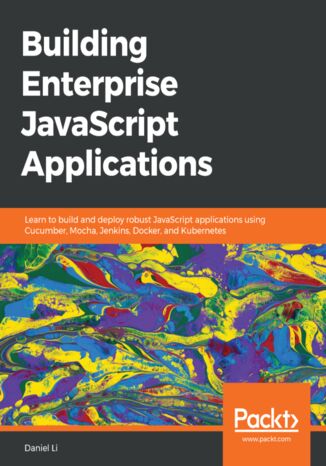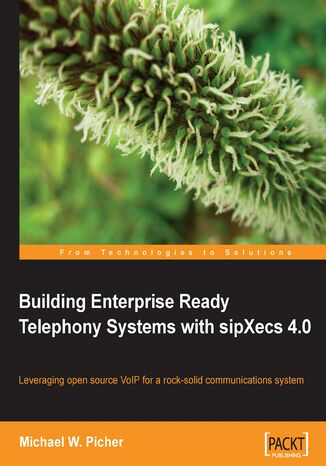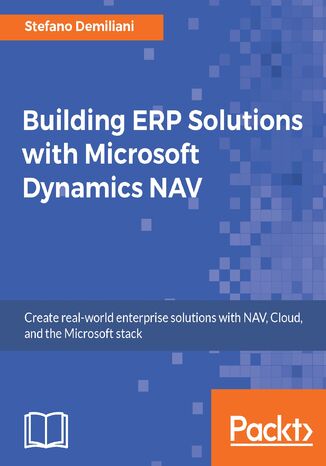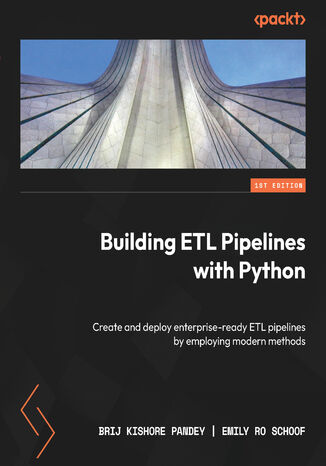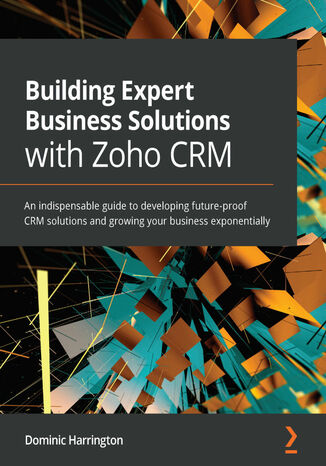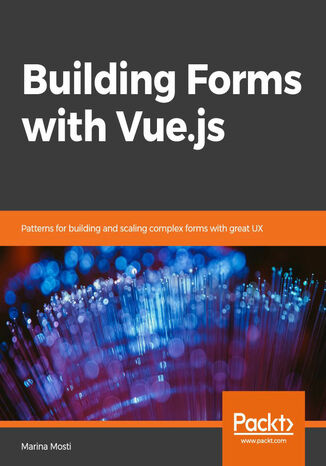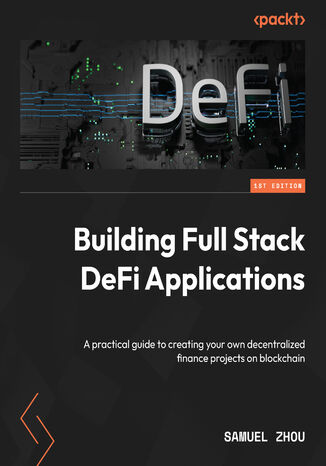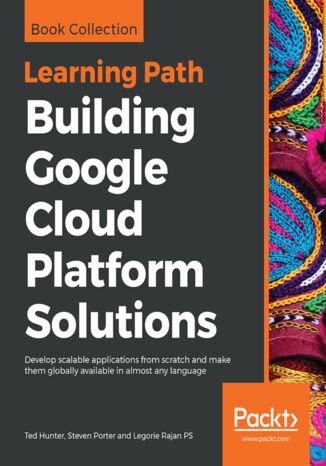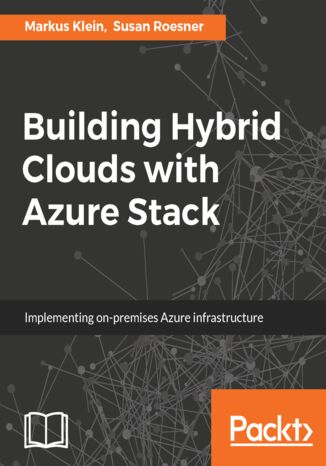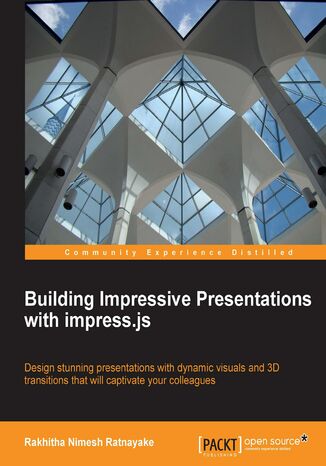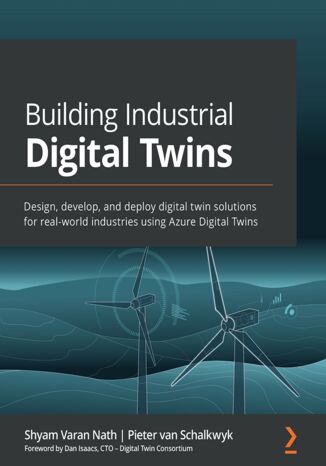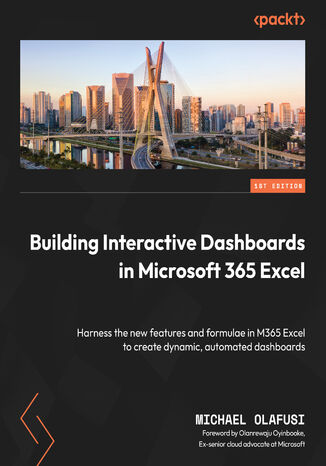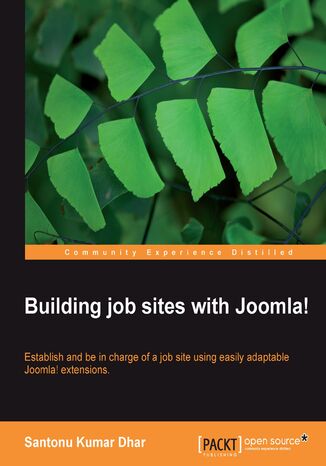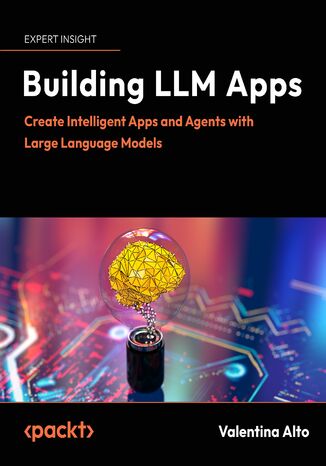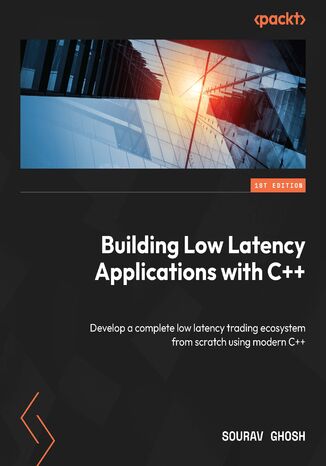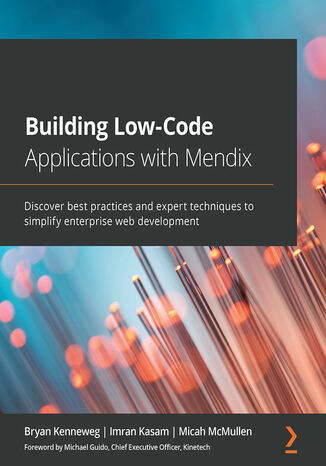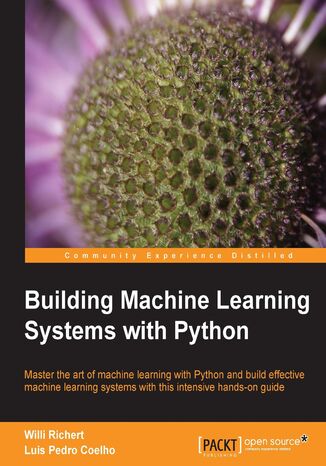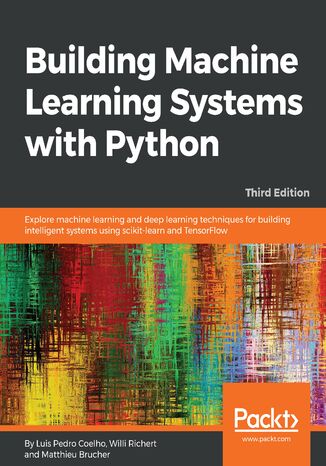Kategorie
-
- Bitcoin
- Bizneswoman
- Coaching
- Controlling
- E-biznes
- Ekonomia
- Finanse
- Giełda i inwestycje
- Kompetencje osobiste
- Komputer w biurze
- Komunikacja i negocjacje
- Mała firma
- Marketing
- Motywacja
- Multimedialne szkolenia
- Nieruchomości
- Perswazja i NLP
- Podatki
- Polityka społeczna
- Poradniki
- Prezentacje
- Przywództwo
- Public Relation
- Raporty, analizy
- Sekret
- Social Media
- Sprzedaż
- Start-up
- Twoja kariera
- Zarządzanie
- Zarządzanie projektami
- Zasoby ludzkie (HR)
-
- Architektura i wnętrza
- BHP
- Biznes i Ekonomia
- Dom i ogród
- E-Biznes
- Ekonomia i finanse
- Ezoteryka
- Finanse
- Finanse osobiste
- Firma
- Fotografia
- Informatyka
- Kadry i płace
- Kobieca
- Komputery, Excel
- Księgowość
- Kultura i literatura
- Naukowe i akademickie
- Ochrona środowiska
- Opiniotwórcze
- Oświata
- Podatki
- Podróże
- Psychologia
- Religia
- Rolnictwo
- Rynek książki i prasy
- Transport i Spedycja
- Zdrowie i uroda
-
- Aplikacje biurowe
- Bazy danych
- Bioinformatyka
- Biznes IT
- CAD/CAM
- Digital Lifestyle
- DTP
- Elektronika
- Fotografia cyfrowa
- Grafika komputerowa
- Gry
- Hacking
- Hardware
- IT w ekonomii
- Pakiety naukowe
- Podręczniki szkolne
- Podstawy komputera
- Programowanie
- Programowanie mobilne
- Serwery internetowe
- Sieci komputerowe
- Start-up
- Systemy operacyjne
- Sztuczna inteligencja
- Technologia dla dzieci
- Webmasterstwo
-
- Antologie
- Ballada
- Biografie i autobiografie
- Dla dorosłych
- Dramat
- Dzienniki, pamiętniki, listy
- Epos, epopeja
- Esej
- Fantastyka i science-fiction
- Felietony
- Fikcja
- Humor, satyra
- Inne
- Klasyczna
- Kryminał
- Literatura faktu
- Literatura piękna
- Mity i legendy
- Nobliści
- Nowele
- Obyczajowa
- Okultyzm i magia
- Opowiadania
- Pamiętniki
- Podróże
- Poemat
- Poezja
- Polityka
- Popularnonaukowa
- Powieść
- Powieść historyczna
- Proza
- Przygodowa
- Publicystyka
- Reportaż
- Romans i literatura obyczajowa
- Sensacja
- Thriller, Horror
- Wywiady i wspomnienia
-
- Archeologia
- Bibliotekoznawstwo
- Filmoznawstwo
- Filologia
- Filologia polska
- Filozofia
- Finanse i bankowość
- Geografia
- Gospodarka
- Handel. Gospodarka światowa
- Historia i archeologia
- Historia sztuki i architektury
- Kulturoznawstwo
- Lingwistyka
- Literaturoznawstwo
- Logistyka
- Matematyka
- Medycyna
- Nauki humanistyczne
- Pedagogika
- Pomoce naukowe
- Popularnonaukowa
- Pozostałe
- Psychologia
- Socjologia
- Teatrologia
- Teologia
- Teorie i nauki ekonomiczne
- Transport i spedycja
- Wychowanie fizyczne
- Zarządzanie i marketing
-
- BHP
- Historia
- Kodeks drogowy. Prawo jazdy
- Nauki prawne
- Ochrona zdrowia
- Ogólne, kompendium wiedzy
- Podręczniki akademickie
- Pozostałe
- Prawo budowlane i lokalowe
- Prawo cywilne
- Prawo finansowe
- Prawo gospodarcze
- Prawo gospodarcze i handlowe
- Prawo karne
- Prawo karne. Przestępstwa karne. Kryminologia
- Prawo międzynarodowe
- Prawo międzynarodowe i zagraniczne
- Prawo ochrony zdrowia
- Prawo oświatowe
- Prawo podatkowe
- Prawo pracy i ubezpieczeń społecznych
- Prawo publiczne, konstytucyjne i administracyjne
- Prawo rodzinne i opiekuńcze
- Prawo rolne
- Prawo socjalne, prawo pracy
- Prawo Unii Europejskiej
- Przemysł
- Rolne i ochrona środowiska
- Słowniki i encyklopedie
- Zamówienia publiczne
- Zarządzanie
-
- Afryka
- Albumy
- Ameryka Południowa
- Ameryka Środkowa i Północna
- Australia, Nowa Zelandia, Oceania
- Austria
- Azja
- Bałkany
- Bliski Wschód
- Bułgaria
- Chiny
- Chorwacja
- Czechy
- Dania
- Egipt
- Estonia
- Europa
- Francja
- Góry
- Grecja
- Hiszpania
- Holandia
- Islandia
- Litwa
- Łotwa
- Mapy, Plany miast, Atlasy
- Miniprzewodniki
- Niemcy
- Norwegia
- Podróże aktywne
- Polska
- Portugalia
- Pozostałe
- Przewodniki po hotelach i restauracjach
- Rosja
- Rumunia
- Słowacja
- Słowenia
- Szwajcaria
- Szwecja
- Świat
- Turcja
- Ukraina
- Węgry
- Wielka Brytania
- Włochy
-
- Filozofie życiowe
- Kompetencje psychospołeczne
- Komunikacja międzyludzka
- Mindfulness
- Ogólne
- Perswazja i NLP
- Psychologia akademicka
- Psychologia duszy i umysłu
- Psychologia pracy
- Relacje i związki
- Rodzicielstwo i psychologia dziecka
- Rozwiązywanie problemów
- Rozwój intelektualny
- Sekret
- Seksualność
- Uwodzenie
- Wygląd i wizerunek
- Życiowe filozofie
-
- Bitcoin
- Bizneswoman
- Coaching
- Controlling
- E-biznes
- Ekonomia
- Finanse
- Giełda i inwestycje
- Kompetencje osobiste
- Komunikacja i negocjacje
- Mała firma
- Marketing
- Motywacja
- Nieruchomości
- Perswazja i NLP
- Podatki
- Polityka społeczna
- Poradniki
- Prezentacje
- Przywództwo
- Public Relation
- Sekret
- Social Media
- Sprzedaż
- Start-up
- Twoja kariera
- Zarządzanie
- Zarządzanie projektami
- Zasoby ludzkie (HR)
-
- Antologie
- Ballada
- Biografie i autobiografie
- Dla dorosłych
- Dramat
- Dzienniki, pamiętniki, listy
- Epos, epopeja
- Esej
- Fantastyka i science-fiction
- Felietony
- Fikcja
- Humor, satyra
- Inne
- Klasyczna
- Kryminał
- Literatura faktu
- Literatura piękna
- Mity i legendy
- Nobliści
- Nowele
- Obyczajowa
- Okultyzm i magia
- Opowiadania
- Pamiętniki
- Podróże
- Poezja
- Polityka
- Popularnonaukowa
- Powieść
- Powieść historyczna
- Proza
- Przygodowa
- Publicystyka
- Reportaż
- Romans i literatura obyczajowa
- Sensacja
- Thriller, Horror
- Wywiady i wspomnienia
-
- Filozofie życiowe
- Komunikacja międzyludzka
- Mindfulness
- Ogólne
- Perswazja i NLP
- Psychologia akademicka
- Psychologia duszy i umysłu
- Psychologia pracy
- Relacje i związki
- Rodzicielstwo i psychologia dziecka
- Rozwiązywanie problemów
- Rozwój intelektualny
- Sekret
- Seksualność
- Uwodzenie
- Wygląd i wizerunek
- Życiowe filozofie
VirtueMart is a premier eCommerce solution powered by Joomla!In Building E-commerce Sites with VirtueMart Cookbook you will learn how to create a full-functioning and attractive eCommerce solution with VirtueMart. You will be shown how to install and configure VirtueMart, how to set-up and run your store day-to-day as well as configure and customize the look and feel of your store. With this book by your side, you will be able to overcome as problems setting up, administrating and customizing your eCommerce store! This book finishes with blueprint projects meaning that getting started with VirtueMart is even easier for the novice and aspiring site builder or developer. If you have always wanted to create a professional-looking store, but are worried about the complexity and difficulty involved, then this book is for you! With numerous recipes, practical tips and solutions Building E-commerce Sites with VirtueMart Cookbook will take you through every step required to achieve eCommerce success.
Building an online store is often considered to be a difficult, complex task. Using the combination of WordPress and the WooCommerce plugin, this is no longer the case. WooCommerce is the most popular e-commerce platform for WordPress and is being rapidly developed by WooThemes. It provides a strong e-commerce solution to set up your own online store in just a couple of hours.This easy and practical book will help you make the most of WooCommerce to be able to set up and run your online store yourself. Installing WooCommerce is an easy task, but this book will explain in detail all the possible settings. After that you'll be adding products, different payment methods, and shipping solutions to your store. You will then customize your store by adding themes to change the look and feel. Once your store is running, you'll learn how to use discount coupons, process your orders, look at reports, and even expand the functionality further with additional plugins.By the end of the book, you will learn everything you need to add a fully functional online store to you WordPress website and start running an online business.
With the over-abundance of tools in the JavaScript ecosystem, it's easy to feel lost. Build tools, package managers, loaders, bundlers, linters, compilers, transpilers, typecheckers - how do you make sense of it all?In this book, we will build a simple API and React application from scratch. We begin by setting up our development environment using Git, yarn, Babel, and ESLint. Then, we will use Express, Elasticsearch and JSON Web Tokens (JWTs) to build a stateless API service. For the front-end, we will use React, Redux, and Webpack.A central theme in the book is maintaining code quality. As such, we will enforce a Test-Driven Development (TDD) process using Selenium, Cucumber, Mocha, Sinon, and Istanbul. As we progress through the book, the focus will shift towards automation and infrastructure. You will learn to work with Continuous Integration (CI) servers like Jenkins, deploying services inside Docker containers, and run them on Kubernetes.By following this book, you would gain the skills needed to build robust, production-ready applications.
Michael W. Picher, Michael Picher
Open source telephony systems are making big waves in the communications industry. Moving your organization from a lab environment to production system can seem like a daunting and inherently risky proposition. Building Enterprise Ready Telephony Systems with sipXecs delivers proven techniques for deploying reliable and robust communications systems.Building Enterprise Ready Telephony Systems with sipXecs provides a guiding hand in planning, building and migrating a corporate communications system to the open source sipXecs SIP PBX platform. Following this step-by-step guide makes normally complex tasks, such as migrating your existing communication system to VOIP and deploying phones, easy. Imagine how good you'll feel when you have a complete, enterprise ready telephony system at work in your business.Planning a communications system for any size of network can seem an overwhelmingly complicated task. Deploying a robust and reliable communications system may seem even harder. This book will start by helping you understand the nuts and bolts of a Voice over IP Telephony system. The base knowledge gained is then built upon with system design and product selection. Soon you will be able to implement, utilize and maintain a communications system with sipXecs. Many screen-shots and diagrams help to illustrate and make simple what can otherwise be a complex undertaking. It's easy to build an enterprise ready telephony system when you follow this helpful, straightforward guide.
Building ERP Solutions with Microsoft Dynamics NAV. Solve business scenarios using NAV
Implementing Microsoft Dynamics NAV in the real world often requires you to integrate the ERP with external applications or solve complex architectural tasks in order to have a final successful project. This book will show you how to extend a Microsoft Dynamics NAV installation to the enterprise world in a practical way.The book starts with an introduction to Microsoft Dynamics NAV architecture and then moves on to advanced topics related to implementing real-world solutions based on NAV and external applications. You will learn how an enterprise distributed architecture with NAV at the core can be implemented. Through a series of real-world cases on every topic and every industry (sales, retail, manufacturing, distribution, healthcare, and so on), you’ll see step by step how to efficiently solve a technical problem. These common problems encountered in a NAV implementation will be solved using the entire technology stack that Microsoft offers.By the end of the book, you will have the knowledge to efficiently solve certain scenarios, you will know which is the best solution architecture to propose to a customer and how to implement it.
Brij Kishore Pandey, Emily Ro Schoof
Modern extract, transform, and load (ETL) pipelines for data engineering have favored the Python language for its broad range of uses and a large assortment of tools, applications, and open source components. With its simplicity and extensive library support, Python has emerged as the undisputed choice for data processing.In this book, you’ll walk through the end-to-end process of ETL data pipeline development, starting with an introduction to the fundamentals of data pipelines and establishing a Python development environment to create pipelines. Once you've explored the ETL pipeline design principles and ET development process, you'll be equipped to design custom ETL pipelines. Next, you'll get to grips with the steps in the ETL process, which involves extracting valuable data; performing transformations, through cleaning, manipulation, and ensuring data integrity; and ultimately loading the processed data into storage systems. You’ll also review several ETL modules in Python, comparing their pros and cons when building data pipelines and leveraging cloud tools, such as AWS, to create scalable data pipelines. Lastly, you’ll learn about the concept of test-driven development for ETL pipelines to ensure safe deployments.By the end of this book, you’ll have worked on several hands-on examples to create high-performance ETL pipelines to develop robust, scalable, and resilient environments using Python.
Zoho CRM is one of the most user-friendly, configurable, and competitively priced CRM systems for managing all your customer relationships. When tailored effectively to your business, it empowers your team to work smarter and helps your business to achieve more profitable and scalable growth. This book will show you how to make the most of Zoho CRM to increase productivity.You’ll start by learning about the foundation modules of Zoho CRM such as Leads, Deals, Contacts, and Accounts, and understand their functionalities that enable you to build effective solutions. Then, you’ll explore innovative workflows that will help you to save time and make sure that your sales teams are proactively managing opportunities and clients. The book also focuses on Zoho Marketplace, as well as how to extend the functionality of Zoho CRM using custom functions. You’ll cover real-world use cases that will inspire you to extend your Zoho adoption by integrating Zoho CRM with other Zoho apps such as Zoho Campaigns, Zoho Forms, Zoho Survey, and SalesIQ. Finally, you’ll discover best practices for adapting and evolving your CRM solutions and maintaining your CRM to achieve continuous improvement.By the end of this CRM book, you’ll have set up a CRM solution that will be fit for the next 10 years of business growth.
Building Forms with Vue.js. Patterns for building and scaling complex forms with great UX
Almost every web application and site out there handles user input in one way or another, from registration forms and log-in handling to registration and landing pages. Building Forms with Vue.js follows a step-by-step approach to help you create an efficient user interface (UI) and seamless user experience (UX) by building quick and easy-to-use forms.You’ll get off to a steady start by setting up the demo project. Next, you’ll get to grips with component composition from creating reusable form components through to implementing the custom input components. To further help you develop a convenient user input experience, the book will show you how to enhance custom inputs with v-mask. As you progress, you’ll get up to speed with using Vuelidate and Vuex to effectively integrate your forms. You’ll learn how to create forms that use global state, reactive instant user input validation and input masking, along with ensuring that they are completely schema-driven and connected to your application’s API. Every chapter builds on the concepts learned in the previous chapter, while also allowing you to skip ahead to the topics you’re most interested in.By the end of this book, you will have gained the skills you need to transform even the simplest form into a crafted user and developer experience with Vue.
Enter the world of Decentralized Finance (DeFi) with Building Full Stack DeFi Applications. Understand how this blockchain-based financial technology, designed to manage crypto assets, runs independently without centralized financial institutions like banks and brokerages, eliminating the fees that banks and other financial companies charge for using their services. This book will show you how DeFi solutions are built with smart contracts running on blockchains and how they allow users to gain and earn crypto assets based on the trust of the smart contracts.This book uncovers the inner workings of DeFi by guiding you through the mathematical foundations and teaching you how to build real-world DeFi products with Solidity and JavaScript. As you progress through the chapters, you’ll learn how to implement smart contracts of liquidity pools to trade cryptocurrencies and implement staking, including farming features that allow users to earn. You’ll also find out how to create asset pools that allow users to lend and borrow cryptocurrencies and generate interest. Additionally, you’ll discover how to use Web3 libraries to build the frontend of DeFi products.By the end of this book, you’ll will be well acquainted with popular tools, libraries, and design patterns for implementing a full-stack DeFi application with Web3 and Solidity.
With its powerful tools and quick implementation capabilities, Flutter provides a new way to build scalable cross-platform apps. In this book, you'll learn how to build on your knowledge and use Flutter as the foundation for creating games.This game development book takes a hands-on approach to building a complete game from scratch. You'll see how to get started with the Flame library and build a simple animated example to test Flame. You'll then discover how to organize and load images and audio in your Flutter game. As you advance, you'll gain insights into the game loop and set it up for fast and efficient processing. The book also guides you in using Tiled to create maps, add sprites to the maps that the player can interact with, and see how to use tilemap collision to create paths for a player to walk on. Finally, you'll learn how to make enemies more intelligent with artificial intelligence (AI).By the end of the book, you'll have gained the confidence to build fun multiplatform games with Flutter.
Ted Hunter, Steven Porter, Legorie Rajan PS
GCP is a cloud computing platform with a wide range of products and services that enable you to build and deploy cloud-hosted applications. This Learning Path will guide you in using GCP and designing, deploying, and managing applications on Google Cloud.You will get started by learning how to use App Engine to access Google's scalable hosting and build software that runs on this framework. With the help of Google Compute Engine, you’ll be able to host your workload on virtual machine instances. The later chapters will help you to explore ways to implement authentication and security, Cloud APIs, and command-line and deployment management. As you hone your skills, you’ll understand how to integrate your new applications with various data solutions on GCP, including Cloud SQL, Bigtable, and Cloud Storage. Following this, the book will teach you how to streamline your workflow with tools, including Source Repositories, Container Builder, and Stackdriver. You'll also understand how to deploy and debug services with IntelliJ, implement continuous delivery pipelines, and configure robust monitoring and alerts for your production systems. By the end of this Learning Path, you'll be well versed with GCP’s development tools and be able to develop, deploy, and manage highly scalable and reliable applications.This Learning Path includes content from the following Packt products:• Google Cloud Platform for Developers Ted Hunter and Steven Porter• Google Cloud Platform Cookbook by Legorie Rajan PS
Building Hybrid Clouds with Azure Stack. Implementing on-premises Azure infrastructure
Azure Stack is all about creating fewer gaps between on-premise and public cloud application deployment. Azure Stack is the logical progression of Microsoft Cloud Services to create a true hybrid cloud-ready application.This book provides an introduction to Azure Stack and the cloud-first approach. Starting with an introduction to the architecture of Azure Stack, the book will help you plan and deploy your Azure Stack. Next, you will learn about the network and storage options in Azure Stack and you'll create your own private cloud solution. Finally, you will understand how to integrate public cloud using the third-party resource provider. After reading the book, you will have a good understanding of the end-to-end process of designing, offering, and supporting cloud solutions for enterprises or service providers.
Impressjs, Rakhitha Nimesh Ratnayake
Everyone has had to present during their lifetime. We've all spent agonizing hours trying to make those PowerPoint presentations engaging. Well now there is a tool that will make those presentations look like child's play.Impress.js is a powerful library that eases the task of creating presentations with smooth animations without depending on a software tool. You are no longer limited to desktop tools as these presentations run on any supported browser anywhere on the Internet.Building Impressive Presentations with impress.js is a quick guide to creating professional presentations using the best aspects of CSS3. It will also guide you through several practical examples which go beyond the conventional slide-based presentations, covering each aspect of the Impress library.From simple presentations to your own personal website this handy practical guide will ensure you get the most out of Impress.JS as quickly as you can. Starting with a simple slide-based presentation we move quickly on adding in sliders, galleries and portfolios to utilize this amazing tool. 3D transitions, rotations, scaling, and transforms are also covered to give your presentations that something extra. The final step is bringing all this together to create a personal website that is viewable on all impress supported browsers.Building Impressive Presentations with impress.js gives you the chance to stand out from the competition and engage with audiences in a way you never have before.
Shyam Varan Nath, Pieter van Schalkwyk, Dan Isaacs
Digital twin technology enables organizations to create digital representations of physical entities such as assets, systems, and processes throughout their life cycle. It improves asset performance, utilization, and safe operations and reduces manufacturing, operational, and maintenance costs.The book begins by introducing you to the concept of digital twins and sets you on a path to develop a digital twin strategy to positively influence business outcomes in your organization. You'll understand how digital twins relate to physical assets, processes, and technology and learn about the prerequisite conditions for the right platform, scale, and use case of your digital twins. You'll then get hands-on with Microsoft's Azure Digital Twins platform for your digital twin development and deployment. The book equips you with the knowledge to evaluate enterprise and specialty platforms, including the cloud and industrial IoT required to set up your digital twin prototype. Once you've built your prototype, you'll be able to test and validate it relative to the intended purpose of the twin through pilot deployment, full deployment, and value tracking techniques.By the end of this book, you'll have developed the skills to build and deploy your digital twin prototype, or minimum viable twin, to demonstrate, assess, and monitor your asset at specific stages in the asset life cycle.
Michael Olafusi, Olanrewaju Oyinbooke
M365 Excel is a modern Excel version that is constantly updated with features that make creating and automating analyses, reports, and dashboards very easy compared with older Excel versions. This book will help you leverage its full capabilities, beginning with a quick overview of what dashboards are and how they are different from other types of reports. Then, you’ll familiarize yourself with the different standard dashboards currently available and what they are meant to accomplish for organizations. As you progress, you’ll get to grips with the use of new powerful tools such as Power Query and dynamic array formulae in the automation of analysis, gaining insights into the right approach to take in building effective dashboards. You’ll equip yourself with not only all the essential formulae, charts, and non-chart visuals but also learn how to set up your dashboard perfectly. Along the way, you’ll build a couple of awesome dashboards from scratch to utilize your newfound knowledge.By the end of this book, you will be able to carry out an impressive and robust level of analysis on business data that may come from multiple sources or files, using better processes, formulae, and best practices in M365 to create insightful dashboards faster.
Grafana is a powerful open source software that helps you to visualize and analyze data gathered from various sources. It allows you to share valuable information through unclouded dashboards, run analytics, and send notifications.Building IoT Visualizations Using Grafana offers how-to procedures, useful resources, and advice that will help you to implement IoT solutions with confidence. You’ll begin by installing and configuring Grafana according to your needs. Next, you’ll acquire the skills needed to implement your own IoT system using communication brokers, databases, and metric management systems, as well as integrate everything with Grafana. You’ll learn to collect data from IoT devices and store it in databases, as well as discover how to connect databases to Grafana, make queries, and build insightful dashboards. Finally, the book will help you implement analytics for visualizing data, performing automation, and delivering notifications.By the end of this Grafana book, you’ll be able to build insightful dashboards, perform analytics, and deliver notifications that apply to IoT and IT systems.
Santonu Kumar Dhar, Chris Davenport
Joomla! is a content management system that helps both novice users and expert developers to create powerful websites. Joomla! has extensions for construcing job sites; web sites for handling employment and careers. It can take hours to build even an elementary job site but imagine yourself building a job site such as Monster, CareerBuilder, a niche job listing such as TechCrunch or your own company job site within few minutes and with minimal development efforts.Building job sites with Joomla! shows you how to create your own job site with Joomla! with the Jobs! Pro extension. From the basic installation and configuration, you will see all the steps required to assemble a working job site in next to no time.This book is a step-by-step tutorial for creating a job site using Joomla!. First you will set up a server environment to install Joomla! 1.5 and Jobs!. Next you will learn how you can use Jobs! configuration settings to control the components of your job site such as adding companies, adding social bookmarking buttons, enabling the users to post their resume online and so on. You will learn to easily manage your site using the Jobs! control panel. This will be followed by using job site template to quickly create a job site and simultaneously test the site you have created. Next you will learn how to speed up the communication between employers and the jobseekers using e-mail templates.You can also entirely control user registration system from Jobs! Pro admin panel. You will also learn to add and manage job types, job categories, and applications to keep your database organized and to keep track of the application status. You will also learn to add a jobseeker or an employer and to manage resume fields. Then you will configure credit systems to charge an amount of money to users according to the specific service provided. By the end of this book you will learn to professionally optimize your Joomla! Job site for search engines and look at list of words that need to be avoided in the URLs.
Building LLM Powered Applications. Create intelligent apps and agents with large language models
Building LLM Powered Applications delves into the fundamental concepts, cutting-edge technologies, and practical applications that LLMs offer, ultimately paving the way for the emergence of large foundation models (LFMs) that extend the boundaries of AI capabilities.The book begins with an in-depth introduction to LLMs. We then explore various mainstream architectural frameworks, including both proprietary models (GPT 3.5/4) and open-source models (Falcon LLM), and analyze their unique strengths and differences. Moving ahead, with a focus on the Python-based, lightweight framework called LangChain, we guide you through the process of creating intelligent agents capable of retrieving information from unstructured data and engaging with structured data using LLMs and powerful toolkits. Furthermore, the book ventures into the realm of LFMs, which transcend language modeling to encompass various AI tasks and modalities, such as vision and audio.Whether you are a seasoned AI expert or a newcomer to the field, this book is your roadmap to unlock the full potential of LLMs and forge a new era of intelligent machines.
C++ is meticulously designed with efficiency, performance, and flexibility as its core objectives. However, real-time low latency applications demand a distinct set of requirements, particularly in terms of performance latencies.With this book, you’ll gain insights into the performance requirements for low latency applications and the C++ features critical to achieving the required performance latencies. You’ll also solidify your understanding of the C++ principles and techniques as you build a low latency system in C++ from scratch.You’ll understand the similarities between such applications, recognize the impact of performance latencies on business, and grasp the reasons behind the extensive efforts invested in minimizing latencies. Using a step-by-step approach, you’ll embark on a low latency app development journey by building an entire electronic trading system, encompassing a matching engine, market data handlers, order gateways, and trading algorithms, all in C++. Additionally, you’ll get to grips with measuring and optimizing the performance of your trading system.By the end of this book, you’ll have a comprehensive understanding of how to design and build low latency applications in C++ from the ground up, while effectively minimizing performance latencies.
Bryan Kenneweg, Imran Kasam, Micah McMullen, Michael Guido
Low-code is a visual approach to application development. It enables developers of varying experience levels to create web and mobile apps using drag-and-drop components and model-driven logic through a graphic user interface. Mendix is among the fastest-growing platforms that enable low-code enthusiasts to put their software ideas into practice without having to write much code, and Building Low-Code Applications with Mendix will help you get up and running with the process using examples and practice projects.The book starts with an introduction to Mendix, along with the reasons for using this platform and its tools for creating your first app. As you progress, you’ll explore Mendix Studio Pro, the visual environment that will help you learn Mendix app creation. Once you have your working app ready, you’ll understand how to enhance it with custom business logic and rules. Next, you’ll find out how to defend your app against bad data, troubleshoot and debug it, and finally, connect it with real-world business platforms. You’ll build practical skills as the book is filled with examples, real-world scenarios, and explanations of the tools needed to help you build low-code apps successfully.By the end of this book, you’ll have understood the concept of low-code development, learned how to use Mendix effectively, and developed a working app.
Willi Richert, Luis Pedro Coelho
Machine learning, the field of building systems that learn from data, is exploding on the Web and elsewhere. Python is a wonderful language in which to develop machine learning applications. As a dynamic language, it allows for fast exploration and experimentation and an increasing number of machine learning libraries are developed for Python.Building Machine Learning system with Python shows you exactly how to find patterns through raw data. The book starts by brushing up on your Python ML knowledge and introducing libraries, and then moves on to more serious projects on datasets, Modelling, Recommendations, improving recommendations through examples and sailing through sound and image processing in detail. Using open-source tools and libraries, readers will learn how to apply methods to text, images, and sounds. You will also learn how to evaluate, compare, and choose machine learning techniques. Written for Python programmers, Building Machine Learning Systems with Python teaches you how to use open-source libraries to solve real problems with machine learning. The book is based on real-world examples that the user can build on.Readers will learn how to write programs that classify the quality of StackOverflow answers or whether a music file is Jazz or Metal. They will learn regression, which is demonstrated on how to recommend movies to users. Advanced topics such as topic modeling (finding a text's most important topics), basket analysis, and cloud computing are covered as well as many other interesting aspects.Building Machine Learning Systems with Python will give you the tools and understanding required to build your own systems, which are tailored to solve your problems.
Luis Pedro Coelho, Willi Richert, Matthieu Brucher
Machine learning enables systems to make predictions based on historical data. Python is one of the most popular languages used to develop machine learning applications, thanks to its extensive library support. This updated third edition of Building Machine Learning Systems with Python helps you get up to speed with the latest trends in artificial intelligence (AI).With this guide’s hands-on approach, you’ll learn to build state-of-the-art machine learning models from scratch. Complete with ready-to-implement code and real-world examples, the book starts by introducing the Python ecosystem for machine learning. You’ll then learn best practices for preparing data for analysis and later gain insights into implementing supervised and unsupervised machine learning techniques such as classification, regression and clustering. As you progress, you’ll understand how to use Python’s scikit-learn and TensorFlow libraries to build production-ready and end-to-end machine learning system models, and then fine-tune them for high performance.By the end of this book, you’ll have the skills you need to confidently train and deploy enterprise-grade machine learning models in Python.



